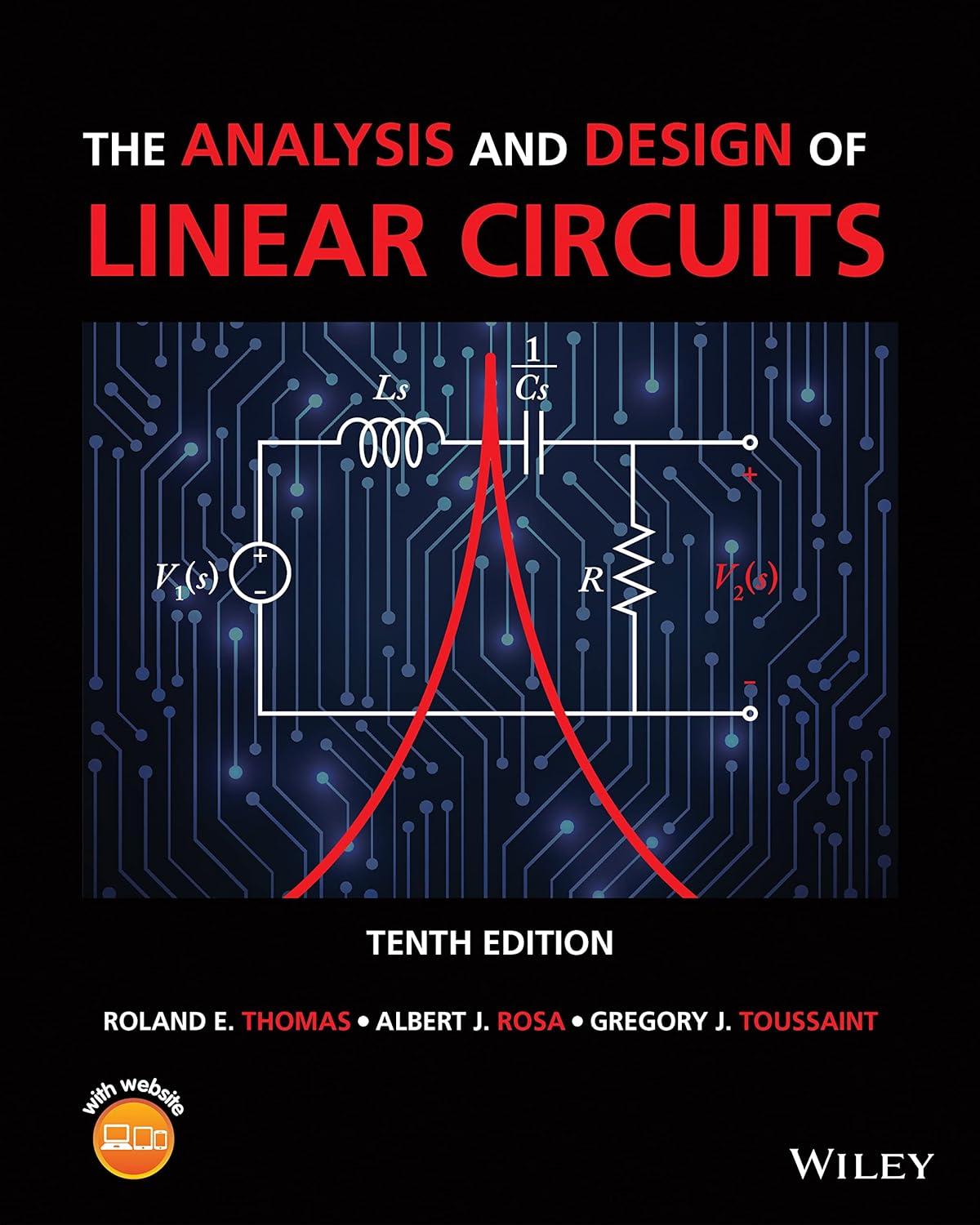Theoretically, an impulse has an amplitude spectrum that is constant at all frequencies. In practice, a constant
Question:
Theoretically, an impulse has an amplitude spectrum that is constant at all frequencies. In practice, a constant spectrum across an infinite bandwidth cannot be achieved, nor is it really necessary. What is required is an amplitude spectrum that is "essentially" constant over the frequency range of interest. Under this concept, an impulse generator is a signal source that produces a pulse waveform whose amplitude spectrum does not vary more than a prescribed amount over a specified frequency range.
Consider a rectangular pulse:
\[
f(t)=A[u(t+T / 2)-u(t-T / 2)]
\]
Find \(F(\omega)\) and sketch its amplitude spectrum \(|F(\omega)|\). Select the pulse duration \(T\) such that the amplitude spectrum does not change by more than \(10 \%\) over a frequency range from \(1 \mathrm{MHz}\) to \(10 \mathrm{MHz}\).
Step by Step Answer:

The Analysis And Design Of Linear Circuits
ISBN: 9781119913023
10th Edition
Authors: Roland E. Thomas, Albert J. Rosa, Gregory J. Toussaint





